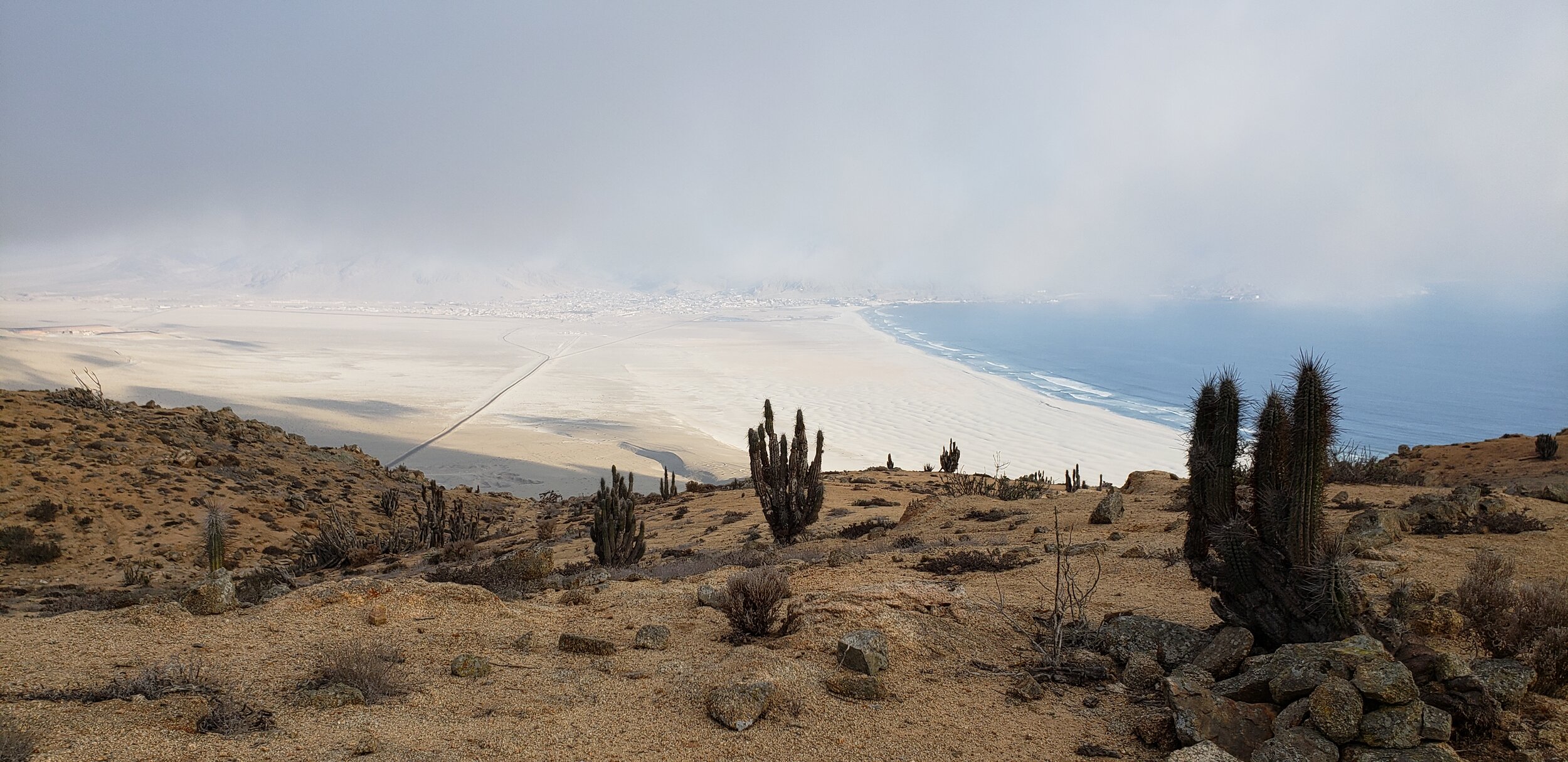Where do cacti come from?
Chilean coastline - Copiapoa and Eulychnia habitat, covered in La Camanchaca fog, responsible for nurturing all plant life in this region.
All cacti (about 127 genera in total) come from different parts of the American continent. They live and thrive from the southernmost tip of Patagonia (Argentina) to the Canadian north. Some (the most interesting of all, if you ask me ;)) are endemic to their home regions, meaning they only exist in that specific location in the world. Usually, when it comes to cacti, endemic species seem to be a bit more challenging in cultivation. Such is the case of my favorite genus: Copiapoa. Since they had to evolve to specialize in surviving in one specific climate and location, they are usually unforgiving to changes in the conditions that they are used to. In reality, this only means we must get to know them and understand them a little bit in order to keep them happy but is that not the reason we start collecting these beautiful plants?
Horticultural crisis.
A property in Chinchilla, QLD, infested with prickly pear in 1928. Image credit: Collection of John Oxley Library, State Library of Queensland
Although cacti originated in the American continent, human activity has enabled the spread of cacti throughout the planet with varied consequences. In Australia for example Opuntia stricta (prickly pear) was introduced in an attempt to build an agricultural fence and to start a cochineal bug dye business. Both efforts were major failures as the plants quickly became invasive and rendered 40,000 km2 of farming land unproductive. The disaster even led to the illegalization of many cactus species in Australia, and later the moth Cactoblastis cactorum from South America had to be introduced to wipe out the invasive Opuntia population as the moth’s larvae eat prickly pear.
Don’t call me Echinopsis…
Another interesting example of human interaction with the natural distribution of cacti, is a favorite genus for many: Trichocereus (or Echinopsis if you’re lame lol). Trichos are found in Argentina, Bolivia, Colombia, Chile, Ecuador, and Peru but the precise origin of these beautiful plants is a mystery! Trichocereus pachanoi for example has a long history of religious use by cultures like the Moche and the Chavín from Peru, dating back 2000 years. This means that human trade may have contributed to the largely widespread distribution of Trichocereus we see today. It’s easy to imagine that plants that were relocated 2000 years or more ago by ancient human civilizations, were able to continue their evolutionary paths adapting to new environments and paving the way for the many different forms of Trichocereus we see today. Aren’t cacti amazing?
With the brief history lesson behind us, let’s get into some distribution maps, shall we?
North American Cacti
Most cacti in the northern part of the American continent are distributed between the southwest part of the United States and pretty much all of Mexico. Considered by many to be the cactus-mecca of the world, Mexico is home to 669 species, out of which 518 are endemic. Mexican cacti account for about 50% of all known cacti species. All in one country!
Some of my favorites from this region include Ariocarpus, Astrophytum, Epithelantha, Ferocactus, Lophophora, Stenocactus, Pachycereus, and many others. I did not mention Opuntia because it is not one of my favorites (glochids really suck) and it is also found in South America.
South American Cacti
Located just a few thousand miles South of the so-called cactus-mecca country of Mexico, is the driest desert on earth - The Atacama desert. It is the only true desert to receive less precipitation than polar deserts, and some areas have not seen any rain in over 50 years! The reason I mention The Atacama first, is the common misconception that Copiapoa comes from this desert when in reality they come from the neighboring coastline on the western side of Chile.
All plant life in this miraculous micro-climate survives with only the moisture provided by the thick fog that covers the region since the vast precipitation which is present on the west (Amazon Rainforest) is blocked off by The Andes Mountain range.
Besides Copiapoa, my favorites from South America include Acanthocalycium, Browningia, Discocactus, Matucana, Trichocereus, Parodia and Pilosocereus but for some reason, my top favorites are all in Chile.
I hope this brief breakdown of species by location can help you better understand your plants, but more importantly I hope that knowing a little more about them will hopefully spark your curiosity and inspire you to learn even more about their origins and the “why” certain techniques may or may not work in cultivation for some, but not others.
Now that you know who is from where, what team are you? North or South?





